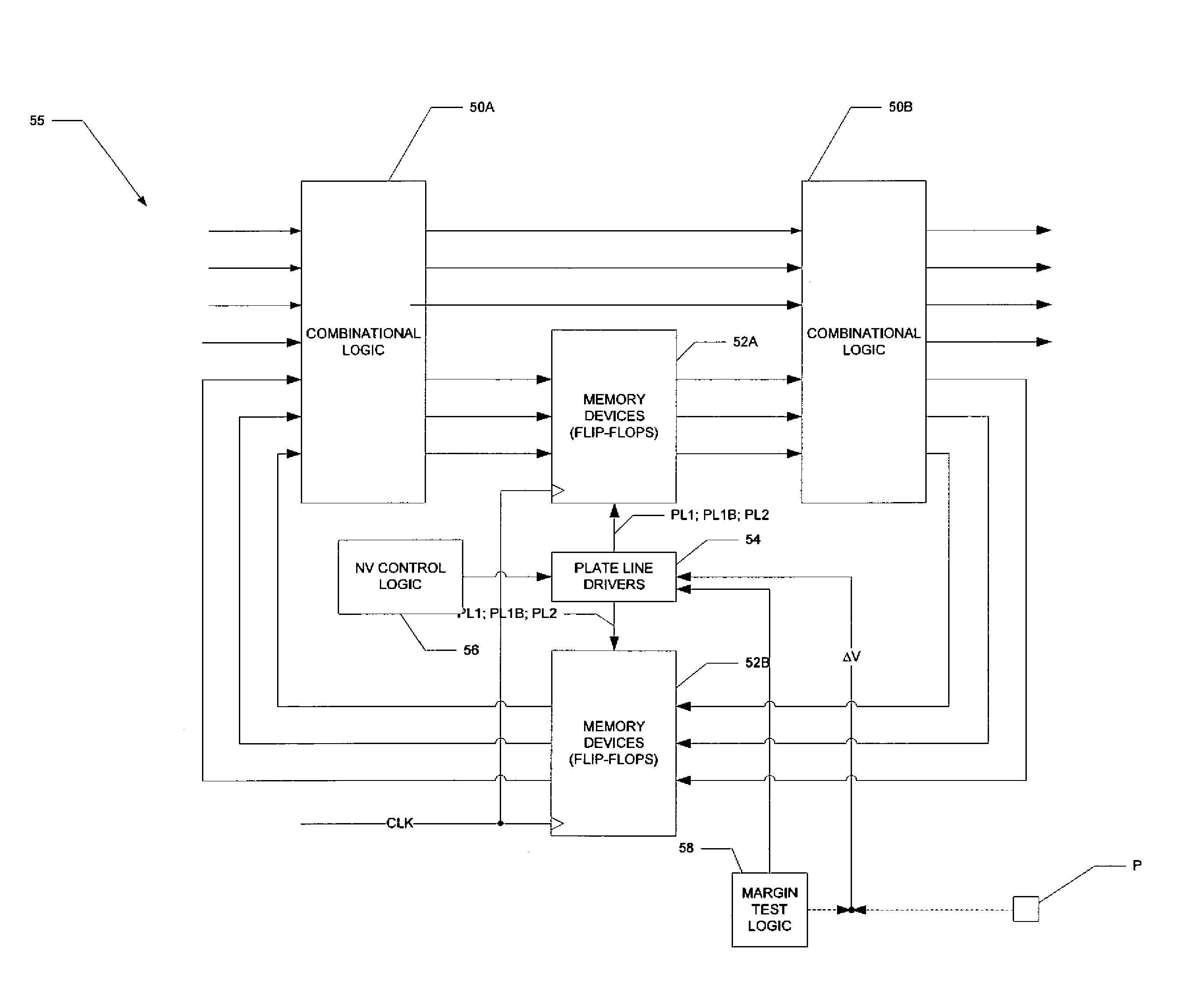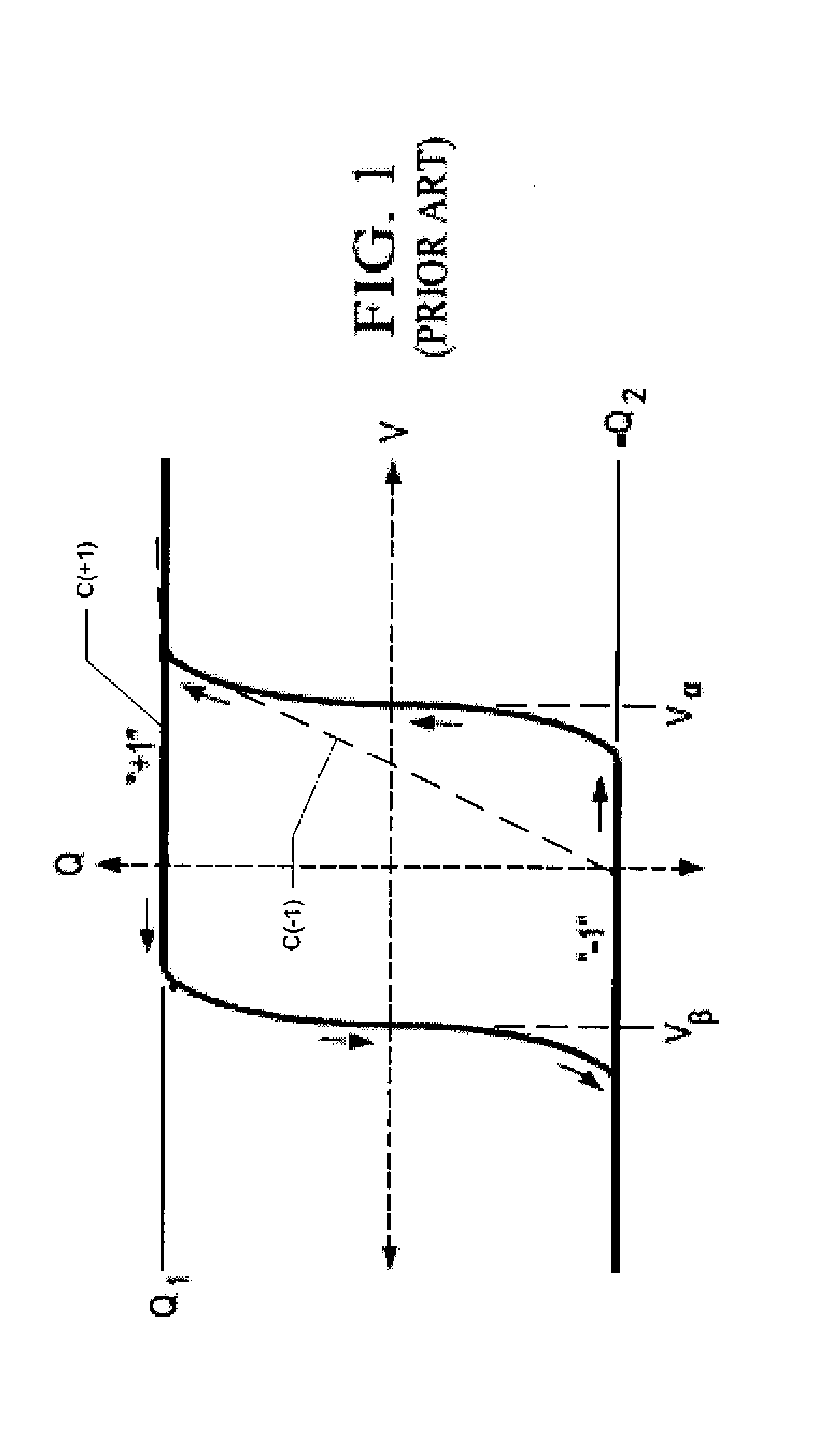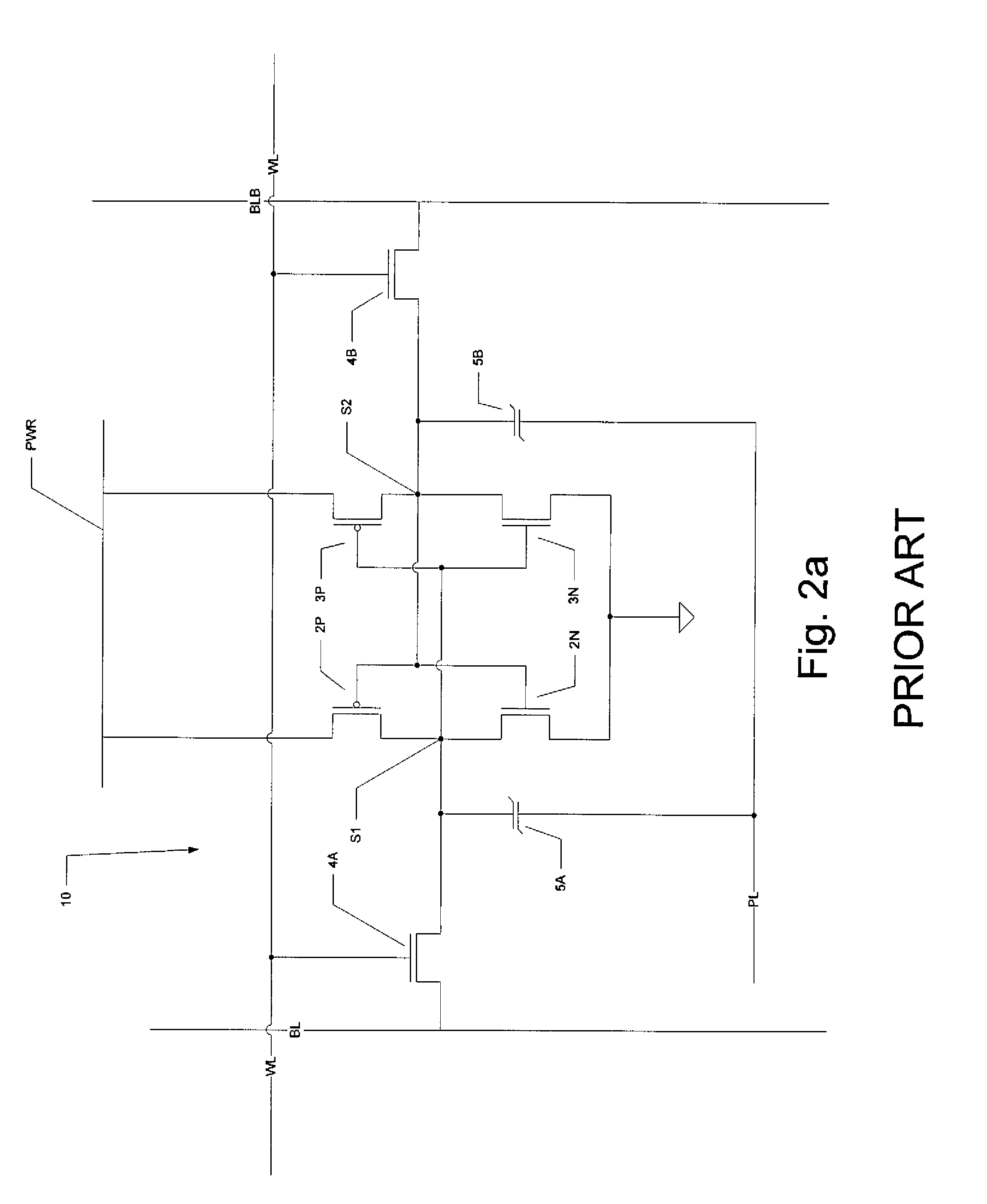Differential Plate Line Screen Test for Ferroelectric Latch Circuits
a ferroelectric latch and plate line technology, applied in the field of semiconductor integrated circuits, can solve the problems of essentially volatile devices, recall is thus a general destructive read, and conventional mos capacitors lose their stored charge, so as to achieve accurate and efficient screening
- Summary
- Abstract
- Description
- Claims
- Application Information
AI Technical Summary
Benefits of technology
Problems solved by technology
Method used
Image
Examples
Embodiment Construction
[0045]This invention will be described in connection with certain of its embodiments, namely as implemented into non-volatile latch circuits implemented into memory resources in the form of static random access memory (SRAM) or as bistable multivibrators (flip-flops), because it is contemplated that this invention is especially beneficial when applied to such circuits. However, it is also contemplated that other logic and memory circuits may also greatly benefit from this invention. Accordingly, it is to be understood that the following description is provided by way of example only, and is not intended to limit the true scope of this invention as claimed.
[0046]As mentioned above, this invention is suitable for use in connection with semiconductor memory circuits, whether serving as a stand-alone integrated circuit or as embedded into larger scale integrated circuits such as microprocessors, microcontrollers, or the so-called “system on a chip” (SoC) integrated circuits. This invent...
PUM
 Login to View More
Login to View More Abstract
Description
Claims
Application Information
 Login to View More
Login to View More - R&D
- Intellectual Property
- Life Sciences
- Materials
- Tech Scout
- Unparalleled Data Quality
- Higher Quality Content
- 60% Fewer Hallucinations
Browse by: Latest US Patents, China's latest patents, Technical Efficacy Thesaurus, Application Domain, Technology Topic, Popular Technical Reports.
© 2025 PatSnap. All rights reserved.Legal|Privacy policy|Modern Slavery Act Transparency Statement|Sitemap|About US| Contact US: help@patsnap.com



